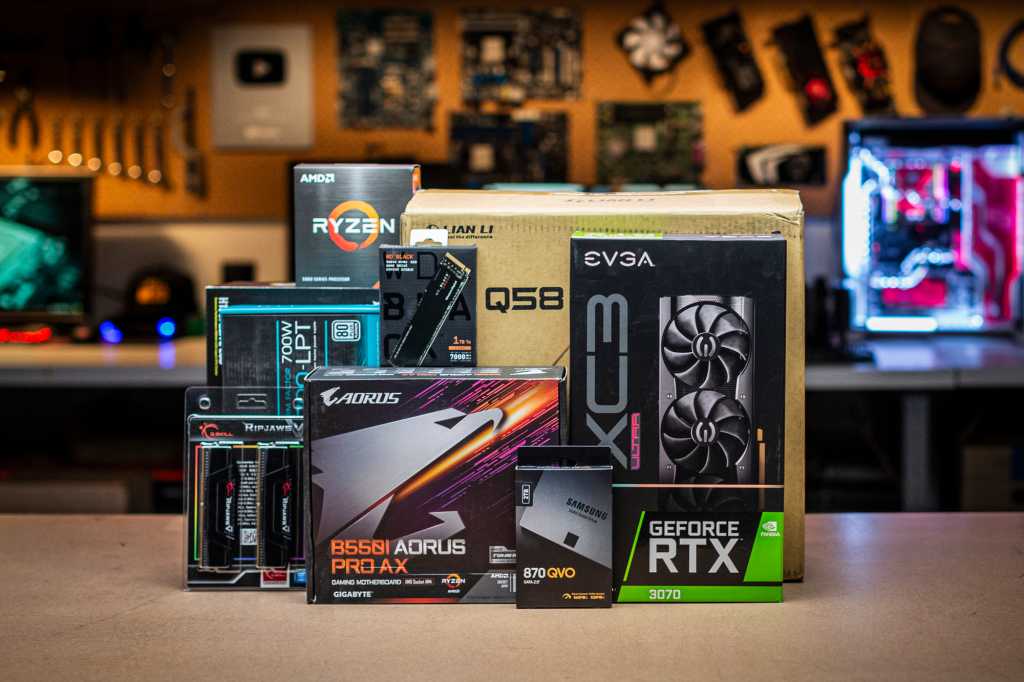Like most people, I typically build my PCs in mid-sized towers with full ATX support because I need the expandability. But lately I’ve been intrigued by the small form factor (SFF) movement gaining steam over the last couple of years. While there are some great mid towers that teeter on the edge of being SFF (depending on your definition), the appeal of massive gaming power in such a small case inspired me to build my own ultra-tiny yet ultra-powerful rig.
I’m not planning to use it for work—I still need a full tower there—so instead I wanted to build a box purely for gaming, and one that will sit comfortably next to my TV. And I cobbled my diminutive DIY creation together live on PCWorld’s YouTube channel, so you can join me in my journey.
This was my first time building in a small form factor case and I was nervous about selecting the right parts. Luckily I don’t need to be nervous about keeping this gaming machine running healthy thanks to the sponsor of this build, Avast. Avast One gives you everything you need to take control of your safety and privacy online, and it’s accessible through a single, easy-to-use interface. A free version includes essential features such as Free Antivirus, Free VPN and Free Firewall Protection, while the premium version has even more advanced protection. Learn more about Avast One at Avast.com.
I originally intended to build around the very popular Cooler Master MasterBox NR200, an 18 liter case with loads of customization options. But while prepping for my build another SFF case caught my eye. The Lian Li Q58 is a 14.5 liter case that features a wild design with four (swappable) hinged side panels while still having plenty of modular options. One side of the case can house a 3-slot graphic cards up to 320mm in length, with the other side holding a mini-ITX motherboard and either a SFX or full ATX power supply. The amount of options and details in this case is stunning, and it turned out to be the perfect choice for my pint-sized powerful. The Lian Li Q58 let me throw powerful 4K gaming-grade components in rather easily. Here’s the full parts list:
- CPU: AMD Ryzen 5 5600X
- CPU cooler: Corsair iCUE H100i Elite LCD AIO
- Motherboard: Gigabyte B550i Aorus Pro AX Mini-ITX
- RAM: G.Skill Ripjaws V Series 2x8GB DDR4-3600 CL16
- GPU: EVGA GeForce RTX 3070 XC3 Ultra
- M.2 NVMe SSD: Western Digital WD Black SN850 1TB
- 2.5″ SATA SSD: Samsung 870 QVO 2TB
- PSU: Silverstone SX700-LPT 700W 80+ Platinum SFX
- Case: Lian Li Q58 Black (PCIe 4.0)
As you’ll see in the video, even with space constraints the build went rather well due to careful planning. There was plenty of room to work my hands into the small case—I didn’t cut myself once! The only part I’m reconsidering is the Corsair AIO. While it’s a fantastic part with a cool LCD panel on the pump, the amount of extra wires and a huge fan controller made it hard to fit into the build without lots of cable management. It was doable for sure, and I might try to make it work, but it’s overkill for my personal use-case and I may switch to something more simple.
I’ve yet to do any serious gaming on the system since completing the build, but the initial testing seems to show that this rig will have no problem running the latest games at 60 frames per second at 4K resolution on my TV. And because the rig will sit in my living room my goal is to try and tweak fan curves to keep the noise as low as possible. This should be fairly easy with the 5600X and the AIO, but keeping the GeForce RTX 3070 running quiet and cool while still targeting 4K output might be trickier.
I’m very excited to try this setup out and hope to report back in about a month with a follow-up on how are things are going. Until then, feel free to tweet your own SFF rigs at me. I’m always excited to see new builds!
Note: When you purchase something after clicking links in our articles, we may earn a small commission. Read our affiliate link policy for more details.
Adam Patrick Murray is a cinematographer/photographer living in Oakland, California.
www.adampatrickmurray.com
Leave a Reply Cancel reply
document.addEventListener(‘DOMContentLoaded’, function () {
var commentForms = document.getElementsByClassName(‘jetpack_remote_comment’);
for (var i = 0; i < commentForms.length; i++) {
commentForms[i].allowTransparency = false;
commentForms.scrolling = 'no';
}
});
<!–
